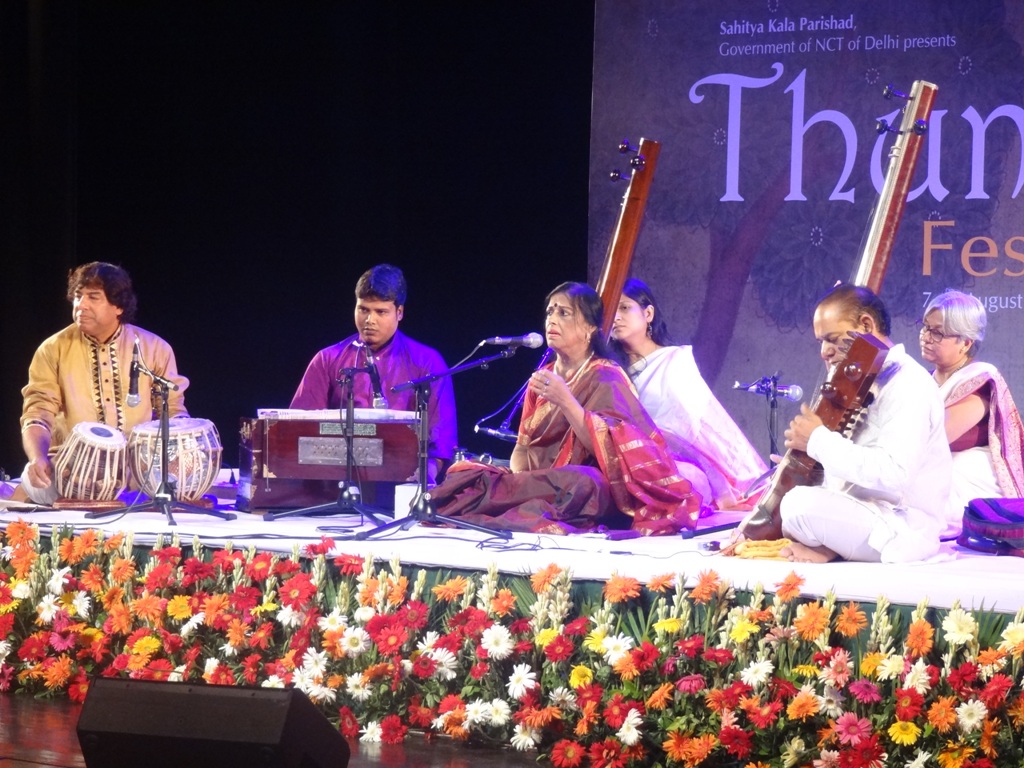- Delhi Government’s Department of Art, Culture & Languages and Sahitya Kala Parishad presented Thumri Festival, 2015 from Aug 7-9
- The festival ends after three-days of mesmerizing vocals
New Delhi, 9th Aug 2015: In a fitting finale to the three days of musical treat, Thumri maestro Girija Devi, who has enriched the art form with her contributions over several decades, performed on the final evening of the Thumri festival today, bringing down curtains on the much-loved annual event.
The 84-year-old veteran of Thumri took stage after relatively younger classical music exponents Uma Garg and Nabhodeep Chakroborty enthralled the audience with their renditions.
Vidushi Uma Garg is a reputed exponent of Hindustani Classical Music as well as a teacher of the art form. She is Dean & Head, Faculty of Music & Fine Arts at Delhi University. Nabhodeep, on the other hand, is a bright young talent in the field recognized by the Govt. of India as a promising artist of Khayal & Thumri.
The annual Thumri Festival, presented by Delhi Government’s Department of Art, Culture & Languages and Sahitya Kala Parishad brings together the maestros of this art form with some outstanding young talent.
Once among the most popular art forms in the royal courts of Awadh, Thumri is still adored and followed by the lovers of Hindustani classical tradition. Over three days, some veteran artists in the field of the likes of Pandit Channulal Mishra and Ustad Ghulam Sadiq Khan performed during the festival.
Other vocalists who rubbed shoulders with the veterans included Anjali Pohankar, Devasish Dey and Kakli Mukherjee.
The beauty of Thumri lies in the fact that it is semi-classical form of singing which appeals equally to the connoisseurs of classical music as well as those who prefer lighter musical art forms.
“Thumri is one of the most loved genres of Indian music which has a wide appeal. It is not only valued by an audience discerning enough to appreciate Hindustani classical music, but also appeals to the audience who might not be as well-versed in pure classical music. Despite much talk in recent years about the diminishing followers of the classical tradition, Thumri has always had its loyal audience,” says Girija Devi.
Thumri rose in popularity in the 19th century under the patronage of Nawab Wajid Ali Shah. Romantic and devotional in nature, the genre is a blend of Hindustani classical with traits of folk literature and music. The dohas of Indian bhakti poets form the core of the content of Thumri songs.
“Thumri is often an expression of the love for Lord Krishna and with time a number of lighter forms have emerged from its folds like Dadra, Chaiti, Hori, Kajari, Saavan and Jhoola. With its power to attract audiences, Thumri has been able to keep alive the tradition of Bhakti poets, despite emergence of new forms of entertainment. It becomes important to give a greater platform to artists who practice it and take it down generations. It is heartening to see young and fresh blood taking up the art form with zest,” says Ustad Ghulam Sadiq Khan.



